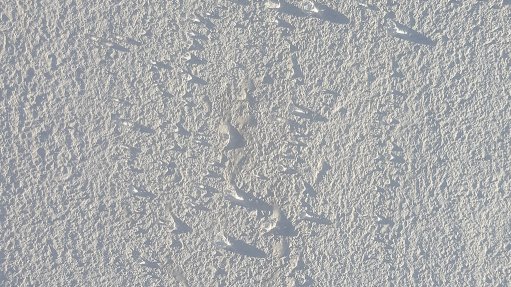
HYDROPHOBIC TOPCOAT The Amoriguard paint is made from processed industrial waste materials
Improving confidence and more projects in the construction sector are providing a boost in demand for locally manufactured, industrial waste-derived, environment-friendly paints, says Amoriguard technical director and paint chemist Ryan Purchase.
The Amoriguard A-Gain paints – the alkali-resistant primer and the topcoat – are made using industrial waste products. The paints were certified as suitable for use in construction by product certification body Agrément South Africa in 2016.
In decorative paint coatings, a significant percentage of the total formula consists of what is called fillers or extenders, which are minerals typically added to increase volume and reduce cost. These include calcium carbonate, talc, silica, mica, clay and kaolin, explains Purchase.
Some, depending on particle shape and size, will contribute to film properties. After three years of extensive research and evaluation of various industry wastes, Amoriguard is now made using specific waste resources to replace most of the fillers and a percentage of the pigment, he says.
“Compared with using unrefined wastes, the products in the final selection are all processed waste, which ensures consistency of the products used in our formulations.”
These coatings are, therefore, sustainable, with levels of volatile organic compounds, alkyl phenol ethoxylate, glycol, ammonia and formaldehyde far below the typical regulated levels globally, he says.
The A-Gain coatings are formulated below critical pigment volume concentration, which means that most voids between the pigment and filler particles in the dried film are filled with solid binder as opposed to air.
The plaster primer and the topcoat are high-solids films that dry to ultra-matt, finely textured finishes, which are ideal for hiding surface imperfections and irregularities. While the amount of waste used could be reduced, the decision was made to keep it as high as practically possible to maximise the volume of waste being consumed per litre of paint used.
The topcoat is hydrophobic, which means that the coating has excellent water resistance and water tends to bead on the surface and run off as opposed to wetting and darkening the paint film.
Demand for ‘green’ coatings is increasing in the South African market, with local and international organisations driving this move, including the Green Building Council of South Africa and international organisations like Australia-based environmental consultancy EcoSpecifier.
Amoriguard was developed after Professor Mulalo Doyoyo was introduced to Purchase by petrochemicals subsidiary Sasol Chemcity. They have a shared passion for finding uses for waste materials and, with the support of Sasol Chemcity, are evaluating various waste materials for possible use in decorative paints.